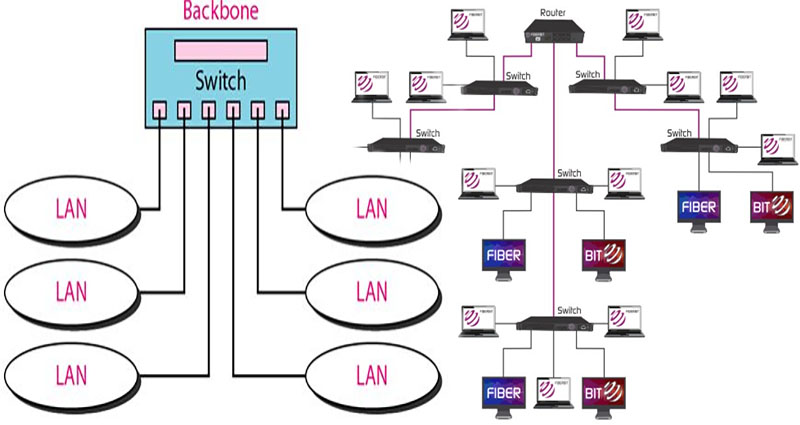Switched backbone networks can support very high traffic volumes, but the performance can be limited by poor interconnectivity. In addition to the complexity of backbone devices, some newer technologies still lack fully developed standards. In this article, we’ll look at Star topology, Layer 2 switches, Gigabit Ethernet, and ATM-25. To learn more, read our articles on Ethernet and ATM. This will help you decide which backbone technology is right for your business.
Star topology
A star topology in a switched backbone network allows multiple sites to communicate with each other through one central site. The central site is called a core switch. The second switch is connected to the core switch through chassis stacking technology, which assigns computers to segments using software and hardware. Each segment has a special subnet address that can be managed by a different network manager. The star topology is used in both wired and wireless networks.
Layer 2 switche
There are many benefits to using Layer 2 switches in switched backbone networks. They are similar to bridges in that they interconnect different networks at the layer 2 or MAC sublayer. These switches function like bridges and build tables of frames to be transferred between networks. Layer 3 switches use IP addresses and subnetting to route data packets. These switches are generally used in higher-capacity networks. Layer 2 switches have some unique features.
Gigabit Ethernet
Gigabit Ethernet is a network standard that uses the same framing structure as standard Ethernet, but supports data rates up to 1 Gbps. Gigabit Ethernet uses a technique called Carrier Sense Multiple Access/Collision Detect to identify and handle collisions. It also supports full duplex operation. Unlike traditional Ethernet, Gigabit Ethernet switches do not require a separate line.
ATM-25
One of the most important features of ATM-based switched backbone networks is the ability to balance multiple quality of service (QoS) queues. With the use of a 53-byte cell, an ATM network can transmit individual cells in alternating fashion and maintain true QoS for both the sending and receiving party. This feature is particularly useful for voice traffic, which is inherently real- time and requires evenly spaced data items.
Parallel backbone
There are two main types of backbone networks: parallel and serial. In a switched backbone network, the former is a type of infrastructure that enables two or more devices to share a single
MAC address. A parallel backbone, on the other hand, is a type of infrastructure that provides multiple MAC addresses. A parallel backbone has two main advantages. It can be installed in a building and allows multiple segments to be run from the same closet. The latter is particularly useful when multiple departments are connected to the same payroll.









